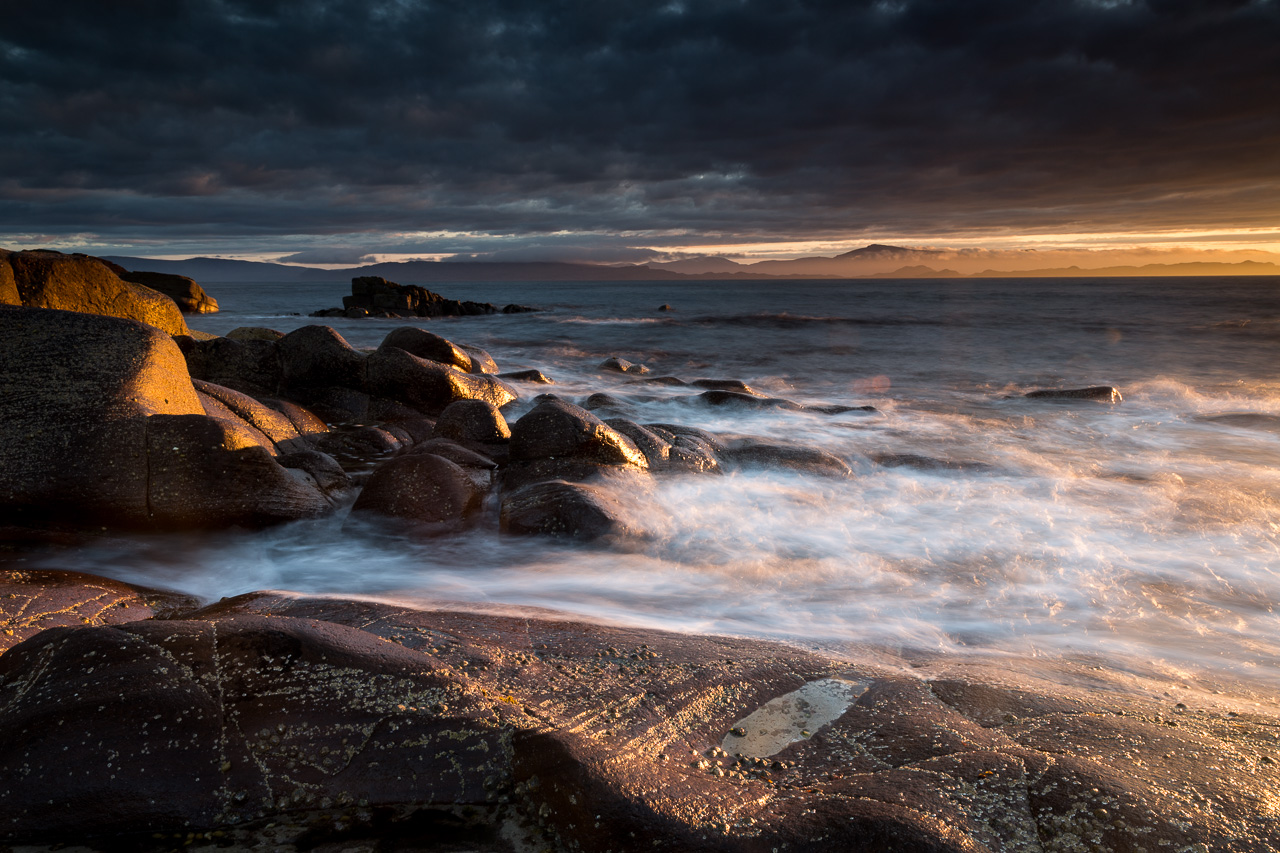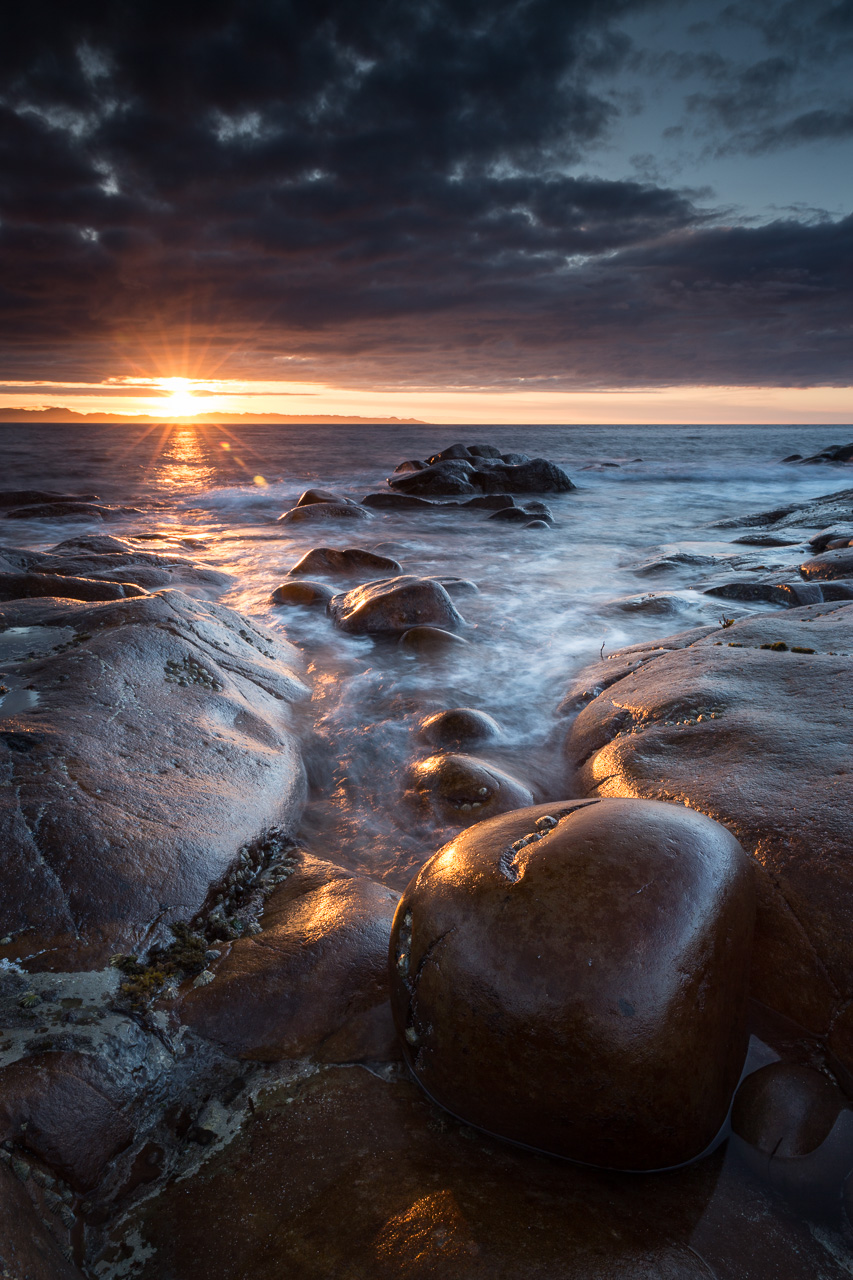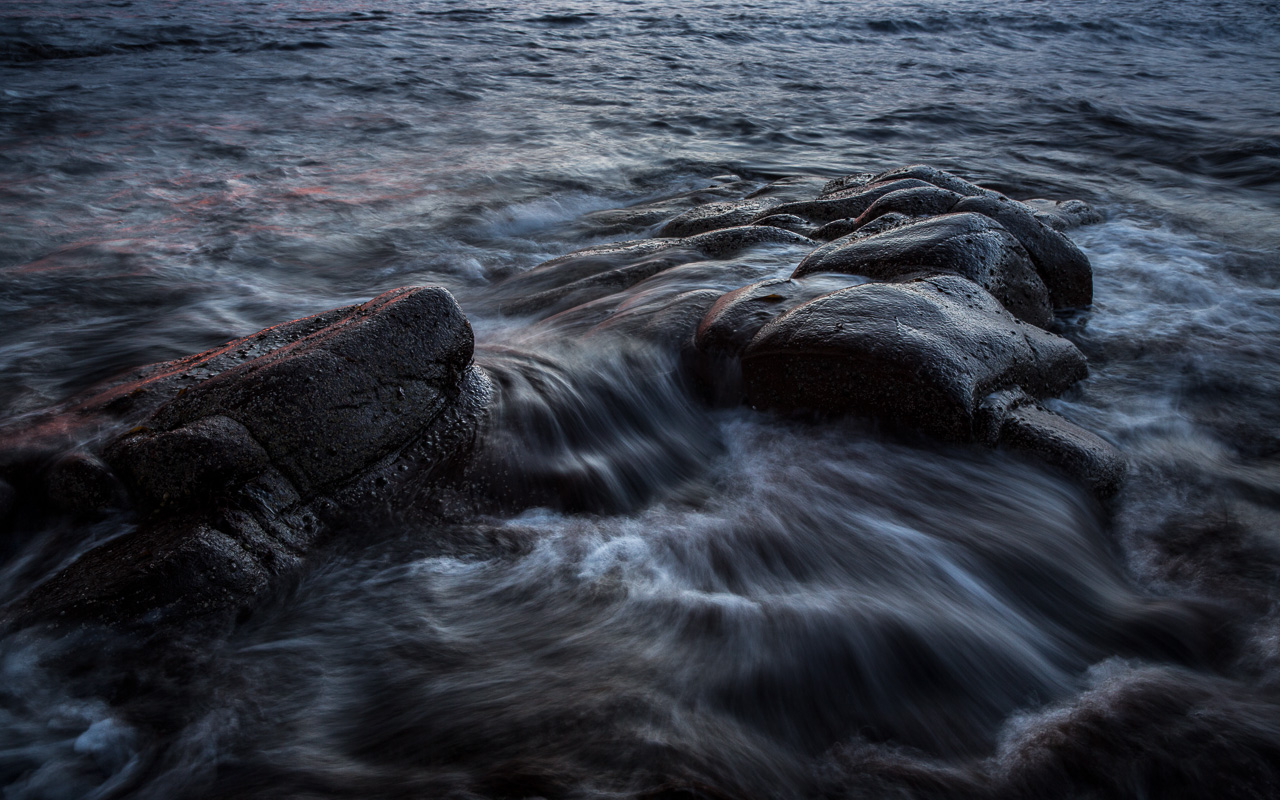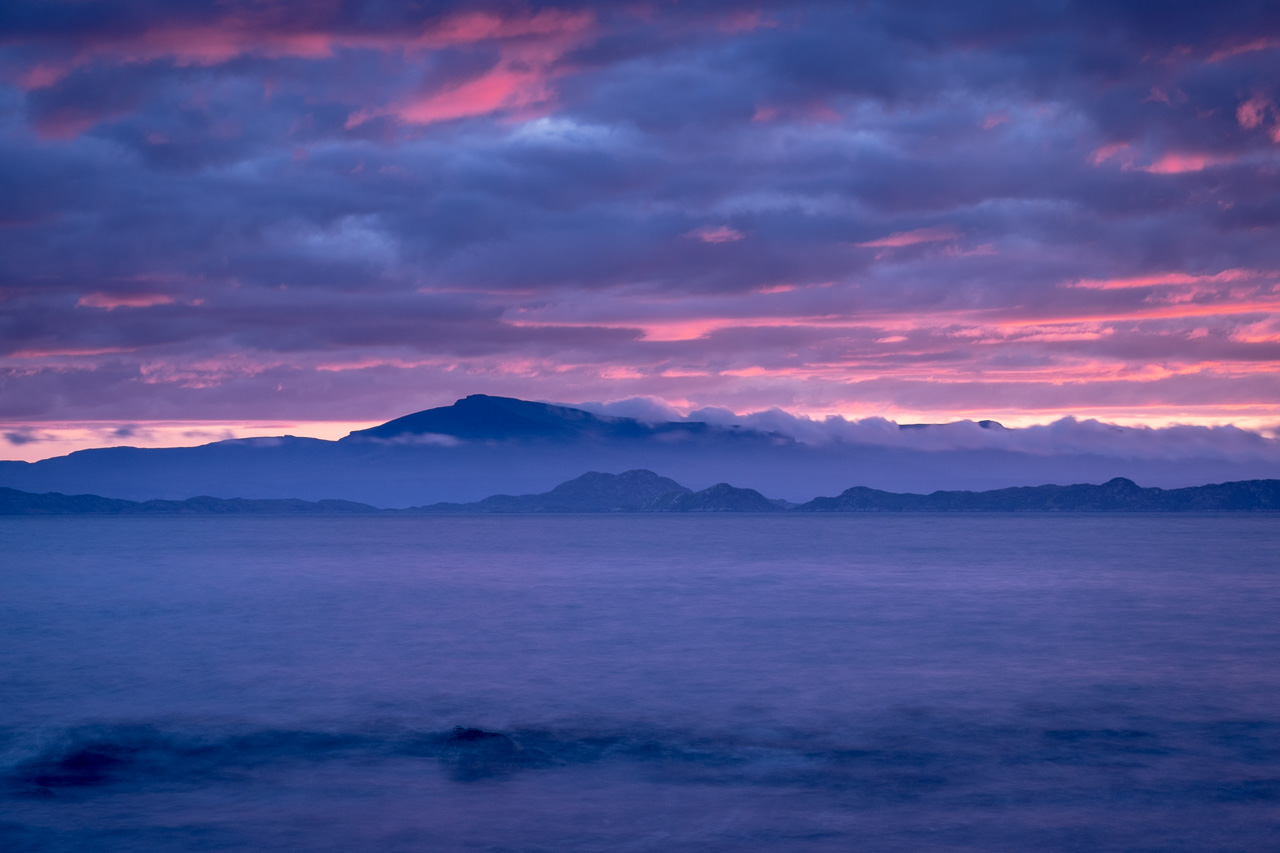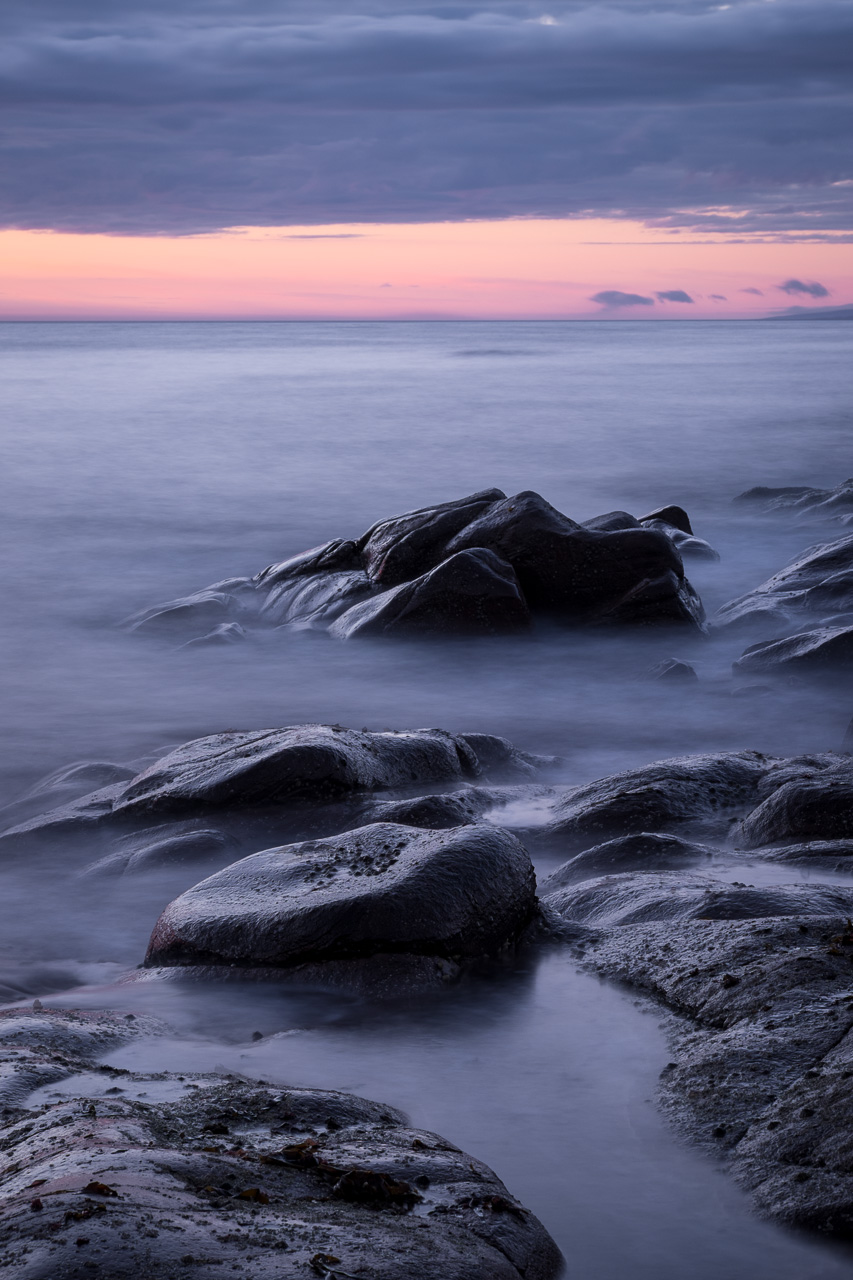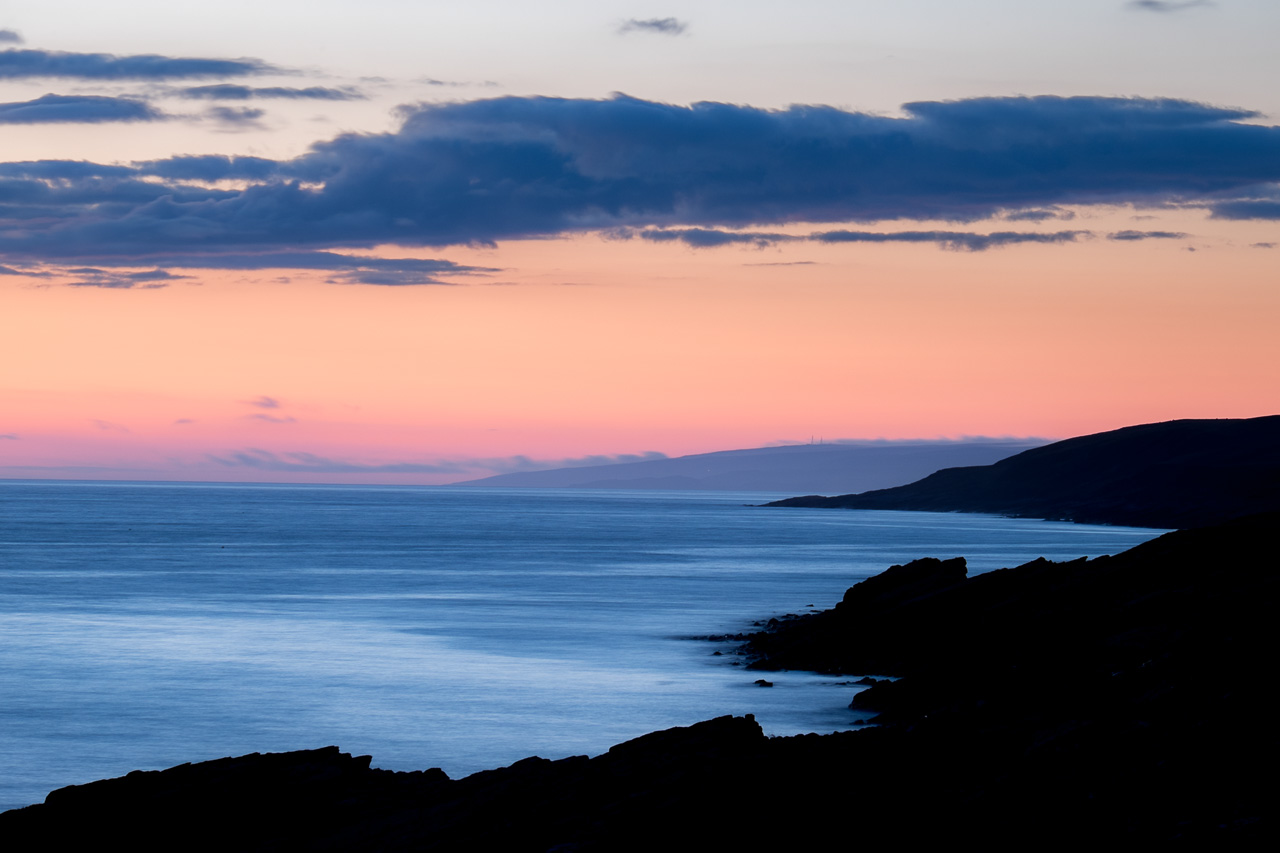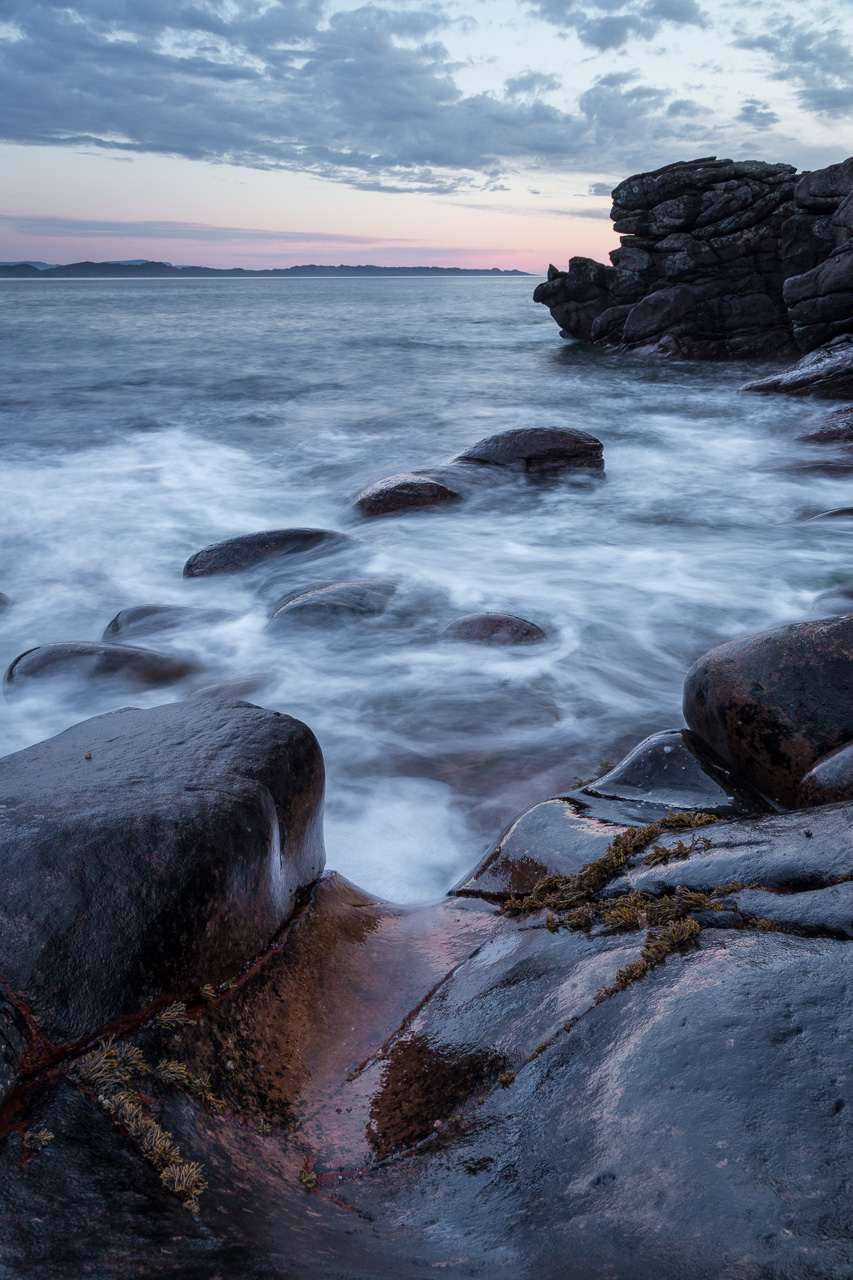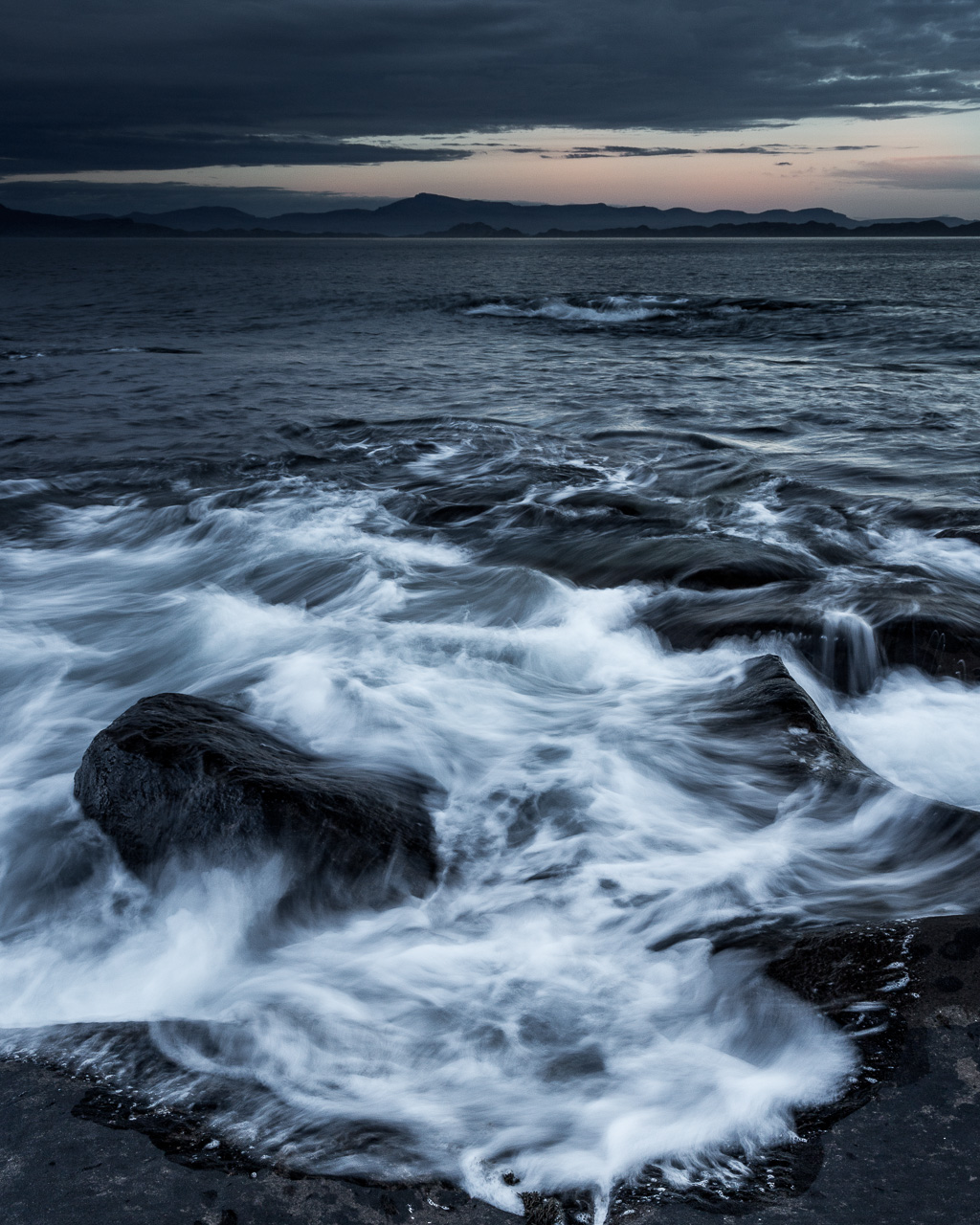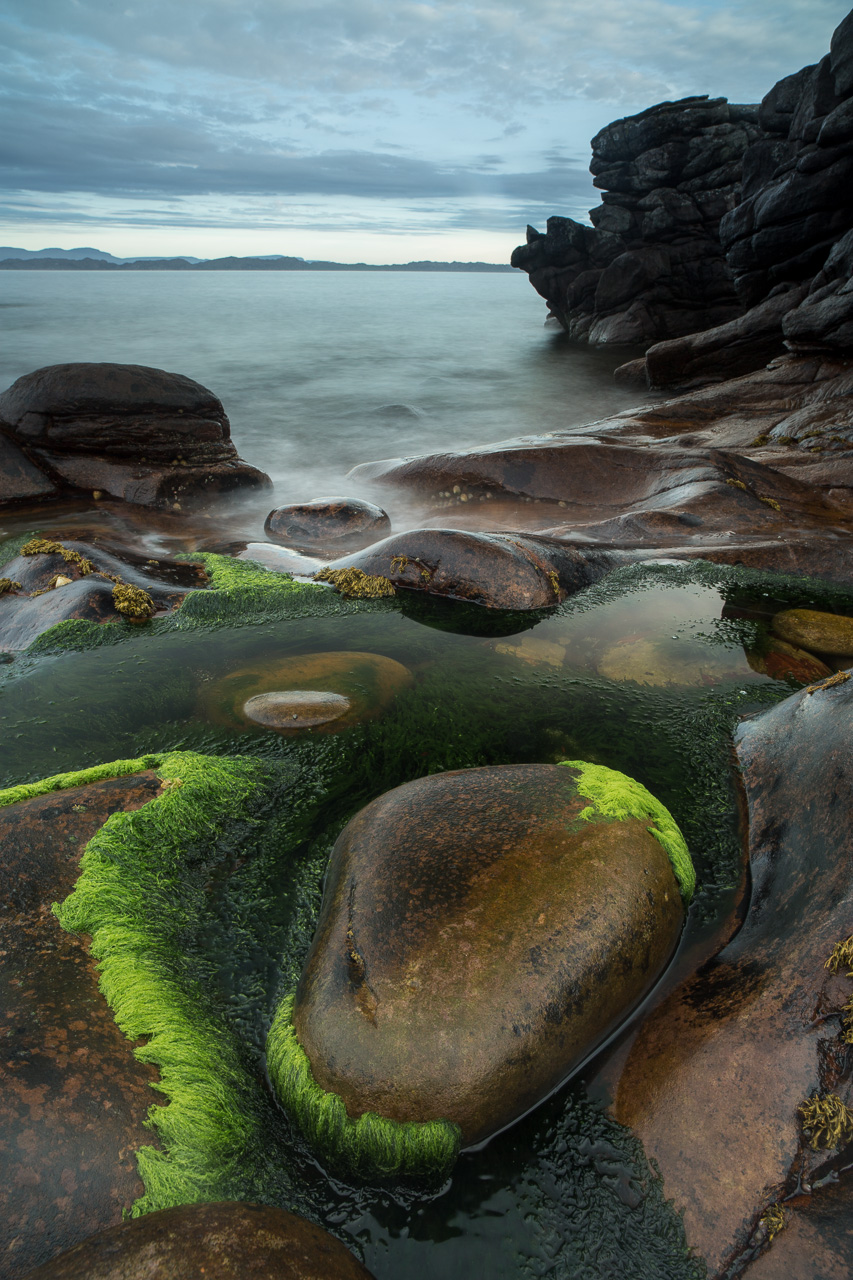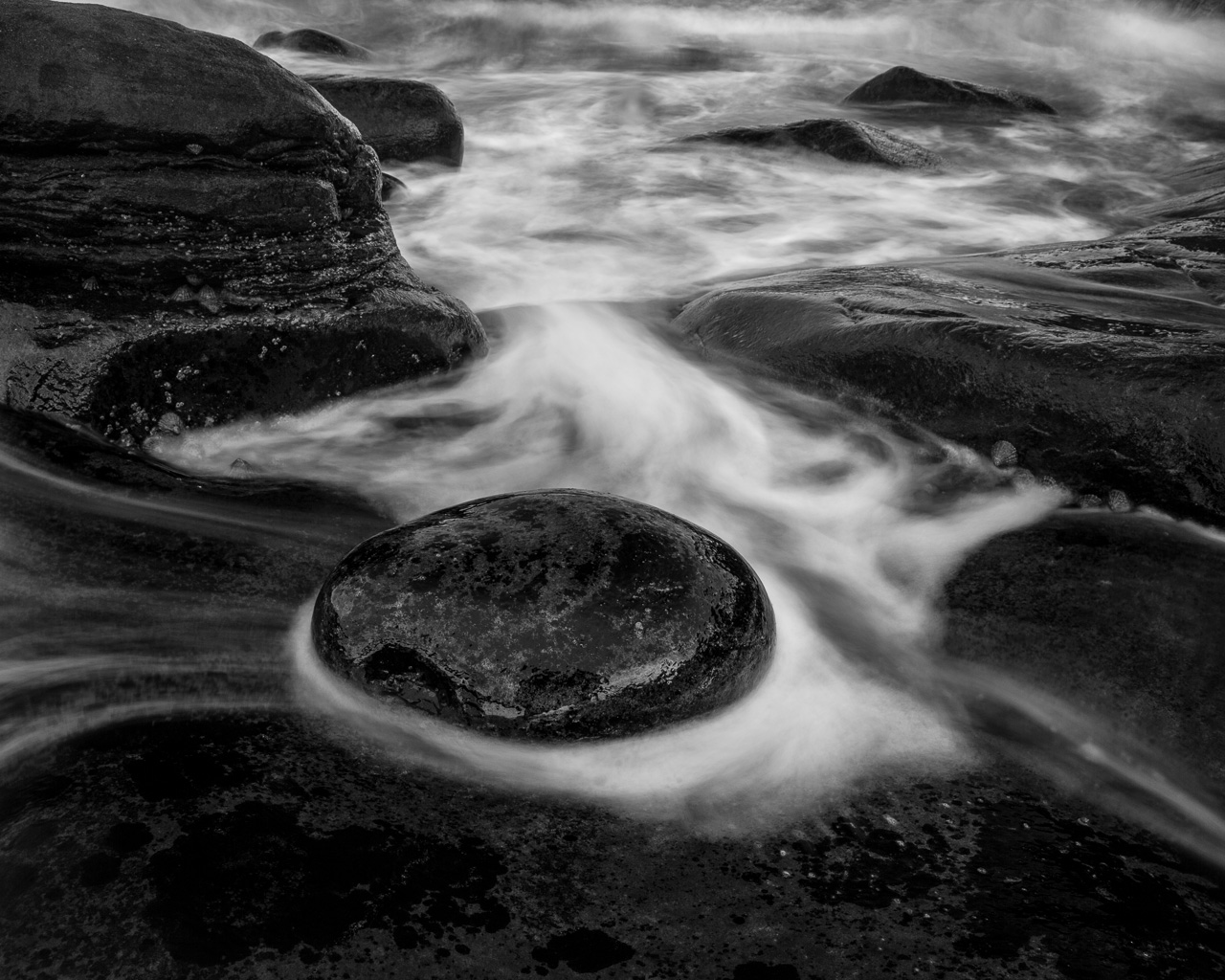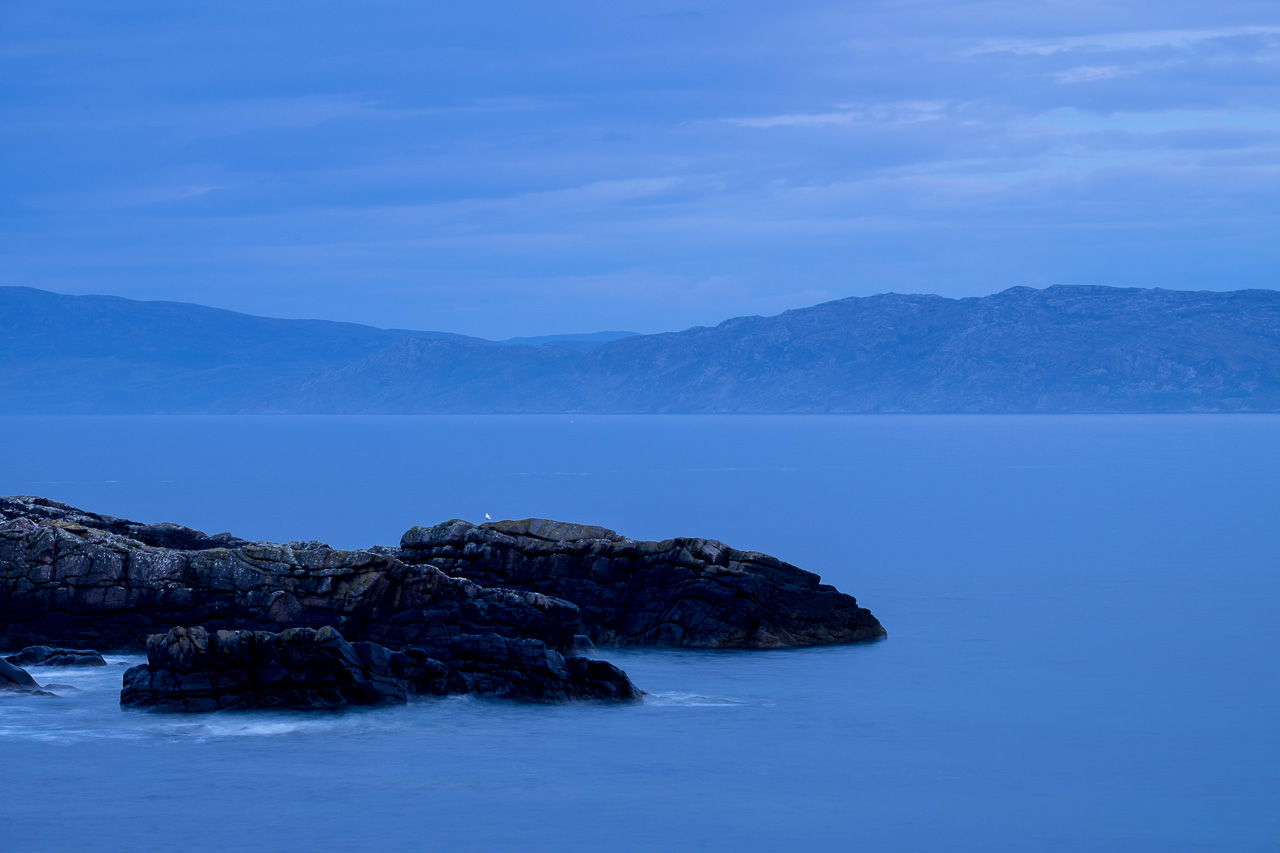I've been trying to resist the temptation to publish too many of my images too quickly from my time here in Wester Ross. For a while now I've been consciously trying to increase the amount of time between taking an image, and processing and publishing it. If I'm too quick in my posting, I often regret a decision I've made at a later date - either disliking the image entirely, or a processing decision I've made.
Working in Series
Further I'm trying to organise both how I work and the images I publish into better defined series than as individual images. I find for me these tend to coalesce over time rather than being immediately clear up front. Generally speaking I think a little distance from the images I'm making is a good thing. It seems strange being up here and making all of these images without sharing but I think it's right that my focus is on making the images in the field and saving their completion and publication for later.
A Great Night Out
However I had a great night on Saturday night camping on a beach on Applecross that I just couldn't resist sharing some images from. The forecast was promising for sunset. Foremost on my mind however was that I had scouted the location a couple of times and had decided that it would be at its best at high tide which would coincide with sunrise on the Sunday morning.
As I find is often the case, with a lower tide means there's a lot of seaweed and other distracting elements in the water. Having been here at a low tide the fantastic geology and rock formations that I found were distant from the sea and so difficult to include into images with the water. There are large, beautifully rounded boulders of warm Torridon sandstone. As well there are a number of rocky outcrops with channels carved through them by the sea which I thought would be a great subject with a high tide.
The sunset certainly didn't disappoint, it was the most vibrant I've seen since my arrival. Even though I was concerned with the tide being further out there were still some really interesting rocks in the surf. I spent several hours during and after sunset gleefully making images. I didn't manage to pitch my tent until 11pm. After a few whiskies I decided to hit the hay, a warm red glow still clinging to the horizon.
Awaking 4 hours later - these long days are a killer for us landscape photographers! - and the horizon was still red. I wondered if it had ever turned truly dark as I slept; it often doesn't at these latitudes in the height of Summer. As is often the case sunrise was a more muted affair of soft pastels, with a weather front from the east snuffing out most of the colour. The high tide didn't disappoint and I found a number of images amongst the rocks that I was really happy with.
Whilst Others Sleep
Despite this the highlight of the morning was my first ever - albeit distant - sighting of a wild otter, one of my favourite animals. One of the great privileges of being a landscape photographer is that I witness and experience things that many rarely or never do. Animal sightings, spectacular weather and light events, amazing views and the landscape looking at its finest are all enjoyed while many are asleep or watching TV. I don't mean to sound (too) smug but such things are an incredible reward for our efforts. I later photographed in the company of seals and, perhaps most bizarrely, a Royal Navy submarine in the Sound of Raasay. A great morning.
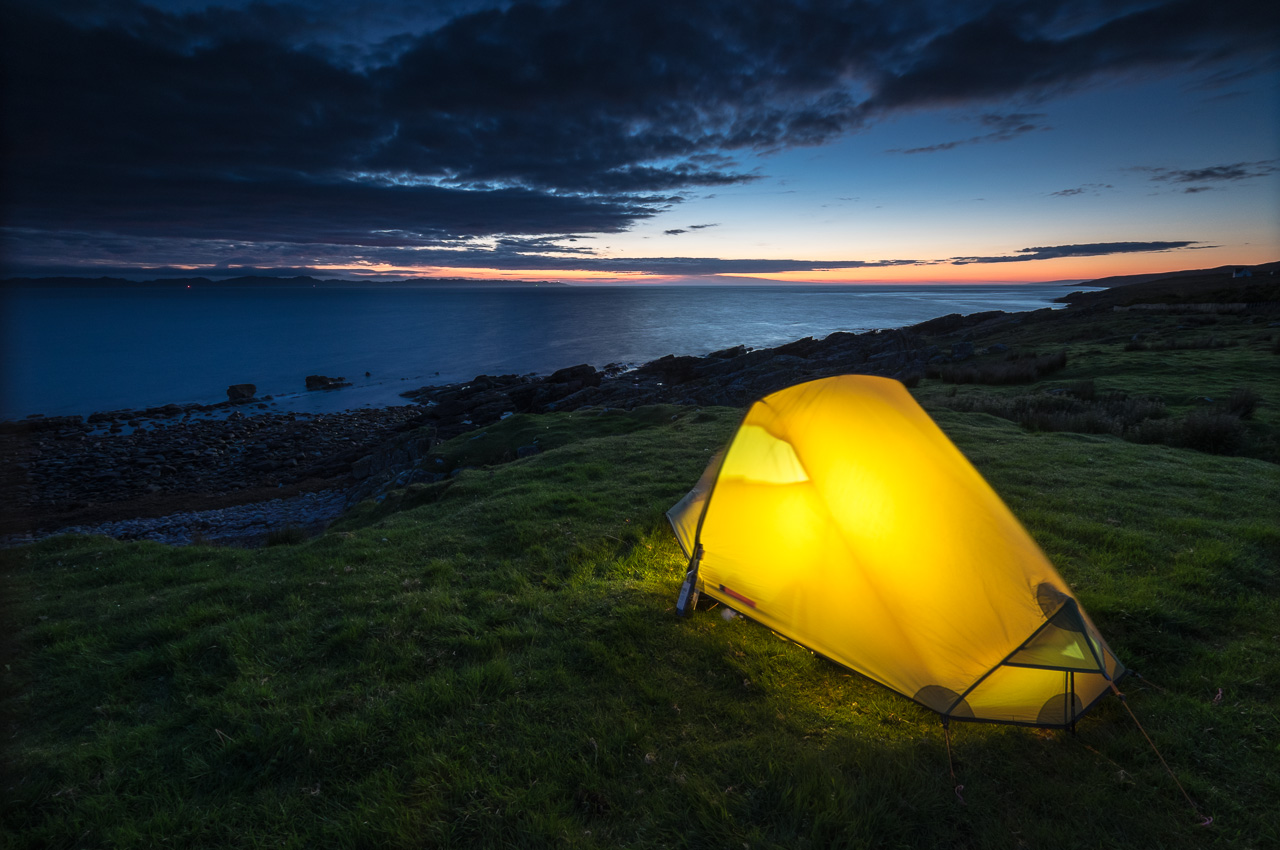
Wild Camping and Photography
I'm conscious that my last post was about wild camping on a munro and this about wild camping on the coast (an altitude difference of 1000m). I wouldn't want it to sound like wild camping is a necessary part of my photography.
However when I'm driving one hour back from a location to drive back only a few hours later, camping is very much a time and fuel efficient approach as well as being rather enjoyable. It's much easier to climb into the tent at night and roll out again in the morning mere minutes from being able to make images. On this particular camp I was barely 50 yards from the car, so camping doesn't demand any real endeavour.
Perhaps more importantly camping is a great way to bond with a location. No longer is it somewhere we drive to for a couple of hours but it's our home for a night. Camping always feels like a very primal thing to do, it heightens my senses and awareness. Places I've camped always feel very special to me in a way that places I've 'merely' photographed may not. I highly recommend it.
Tunnel Vision
Given it was the point of this post, let me leave you with some images. I made about 400 - about 200 were of the otter mind you! - and my final selects and processing will no doubt change given time. Hopefully they give you a flavour of the conditions and the type of image I was going for on location.
Note how there are a range of different styles in this selection - from details, to more usual seascapes, to telephoto shots. I'm as guilty as anyone of getting 'tunnel vision' where I spend all of my time trying for a certain type of shot. It can be quite depressing coming home with 200 images that are essentially the same, where I might select a handful and consign the others to a lifetime confined to the hard drive.
I'm very pleased to have come home with a range of different images that I'm happy with. I might have upwards of a dozen that I will go on to publish. The key I think is to snap out of the tunnel vision, to be observant and to be open to opportunities that arise.
I also found it useful to have two cameras on location with me. The Canon 5D3 with 24-70 was what I used for most of these shots, with a Fuji 55-200 mounted on an XT1 being used for the others. I've found this combination extremely useful on this trip. Not having to change lenses constantly is a real bonus, and at times I'd be making a long exposure or shooting a time-lapse with one whilst framing another image with the other.
This is somewhat counter to my regular argument of sticking with one piece of kit you're familiar with and focusing on getting the most from it. I still need to consider if this dual-camera approach will lead me to making stronger images or just more images, and will no doubt blog about it in the future.
Ok, finally, here are some images.
As a sidenote this location is one that we'll be visiting on my 5 day Torridon - and Applecross - workshop on Friday. It's not too late to join me. You can find details here.
